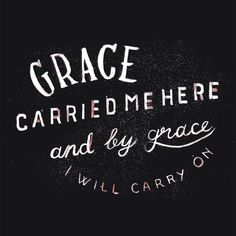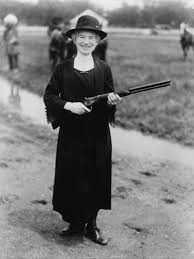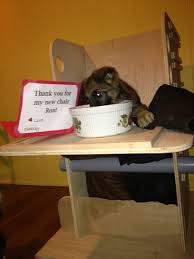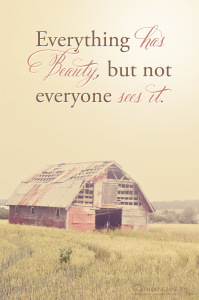Ultimately I think that letting go isn’t about loss or admitting defeat. To let go with grace is to cherish the memories, to overcome and to move on. Letting go gracefully is accepting and having confidence in the future.
I’ve decided my lesson for the past year has been letting go. Now if you had asked me before if I had a problem with this concept, the answer would have been a resounding no. Boy, was I wrong and boy, did I learn my lesson!
We are constantly letting go – of people, relationships, of our childhoods, grown children, our ideas of how things should be or how we expected.
There are lots of versions of letting go but likely the most painful is the death of a loved one. A year ago I made the incredibly heart-breaking decision of saying goodbye to of one of the kindest, most beautiful and honest horses I have ever known. Everyone wanted a horse like Claire. Quite simply put, she lived in grace – quiet, charming and full of love. I trusted her implicitly, not only with myself but with my riding students, young and old. In turn, she trusted me and we brought out the best in each other. My incredible Claire had come to the end of her journey with cancer. In the prime of her life, at 12 years old, our time together was over.
I often imagined our future together: her teaching countless kids to ride and me enjoying our peaceful drives in her beautiful Buckeye road cart until she settled into a well-deserved retirement. But, that’s not how it played out.
I think our natural reaction when faced with the possibility of losing something is to hold on even tighter. On our last night together, I prayed for the strength to say goodbye with grace when what I wanted to do was just scream and cry. Eventually, through the tears, I shared out loud all of our special memories in our time together and said thank you for each one. I took comfort in the fact that many people go their whole lives and never find a horse as special as she was.

In the wake of her death, each day was a struggle – I stopped teaching riding lessons and swore off any future horses. I prayed for wisdom to explain her death to sad children and to face my own unanswered questions, anger and loss. I prayed for acceptance that no one else could understand my pain and loss. Most of all, I prayed to find joy again.
And the thing that sucked most of all? LIFE WENT ON!
During the dead of winter, I was asked by a good friend if I wanted to try out her young green broke gelding. My head said, ‘No way, this is not what you want!’, while my heart said ‘Okay, I’ll come try him out’.
 Long story short: I went to ride Tane and we connected right away. The ‘coincidences’ added up – Tane and Claire share a well-known grand sire and are both named after their French heritage. Following my heart, he came home to live with us a few weeks later.
Long story short: I went to ride Tane and we connected right away. The ‘coincidences’ added up – Tane and Claire share a well-known grand sire and are both named after their French heritage. Following my heart, he came home to live with us a few weeks later.
It’s not all sunshine and rainbows – he is demanding and inexperienced with an attitude. But he also adores me and tries his heart out. He has made me grow as a horsewoman and forced me to step outside the box and stretch and fear and trust and love more than I ever thought possible.
Left: Tane on his first trail ride, a magical night!
The loss of Claire was book ended by goodbyes to my beautiful Collie, Erran, and German Shepherd, Abbi. They had lived full and long lives with lots of happy memories and accolades. To them, I was grateful for the years of companionship, traveling to dog shows and many lifelong friendships made. I said goodbye with grace and my heart full of love.


In June, barely ready to accept another loss, I had to let my beautiful Oakley go (see her story here) . My scarcely mended heart broke again as my little fighter peacefully left us. I said thank you for three years of a high energy wild ride that was a roller coaster of loving and training and learning and the opportunity to educate anyone that would listen about mega-esophagus. I thanked Oakley for the lessons and the friendships and the strength she led me to find so I could raise a spirited, smart little dog who lived to scent track and be a farm girl.
 Portagecreek’s Sure Shot RI, “Oakley”
Portagecreek’s Sure Shot RI, “Oakley”
And so after all that, I saw things unfold that made me realize I had to let go of some relationships too. I wrestled to hold on so tightly; thinking of all the memories and love and fun we had shared. It was hard to accept that it was over and I wondered if I’d ever find friendships like that again? This time was different; this time I had the choice to let go and it was scary!
I fought it all the way – I made excuses and gave countless apologies though I knew I did nothing wrong. Reluctantly I realized that even the strongest and most loving relationships can be touched by feelings of jealousy, inadequacy and insecurity at times in response to somebody’s growth or change.

Walking away from a toxic relationship isn’t easy, but it is always brave and always strong. It is always okay. And it is always – always – worth it. Hidden in that mess is the beautiful learning and the growth.
And so with these sad losses, I’ve seen beautiful opportunities arrive. Old and new friendships have began or re-kindled, accompanied by even more laughter and joy. I get this sneaking suspicion that ‘everything’s gonna be OK’.
Ultimately I think that letting go isn’t about loss or admitting defeat. To let go with grace is to cherish the memories, to overcome and to move on. Letting go gracefully is accepting and having confidence in the future.
Letting go is about staying in grace and staying grateful for the experiences that made you laugh and cry and grow.

 2 years since we said goodbye to Claire.
2 years since we said goodbye to Claire.
 horses and suffered losses that should have turned me away for life. But, they didn’t. Horses and riding taught me resilience and patience that everything will work out as it should.
horses and suffered losses that should have turned me away for life. But, they didn’t. Horses and riding taught me resilience and patience that everything will work out as it should.



 Long story short: I went to ride Tane and we connected right away. The ‘coincidences’ added up – Tane and Claire share a well-known grand sire and are both named after their French heritage. Following my heart, he came home to live with us a few weeks later.
Long story short: I went to ride Tane and we connected right away. The ‘coincidences’ added up – Tane and Claire share a well-known grand sire and are both named after their French heritage. Following my heart, he came home to live with us a few weeks later.





 her contained, I searched the meaning of the name “Oakley”. It represents the oak tree, naturally. What I didn’t know is that oak trees are known for their strength and hardiness and their ability to thrive in undesirable conditions and poor soil. Just like my Oakley! I never questioned if this was a coincidence. That day I got my answer and going forward I was committed 100% to this journey. I stopped dwelling on the ‘whys’ and worrying about what might happen and started loving my spirited and joyful broken thing.
her contained, I searched the meaning of the name “Oakley”. It represents the oak tree, naturally. What I didn’t know is that oak trees are known for their strength and hardiness and their ability to thrive in undesirable conditions and poor soil. Just like my Oakley! I never questioned if this was a coincidence. That day I got my answer and going forward I was committed 100% to this journey. I stopped dwelling on the ‘whys’ and worrying about what might happen and started loving my spirited and joyful broken thing. Oakley at her first conformation show with her best friend, “Bear” (nrCh Campeon’s Vaquero Too).
Oakley at her first conformation show with her best friend, “Bear” (nrCh Campeon’s Vaquero Too).
